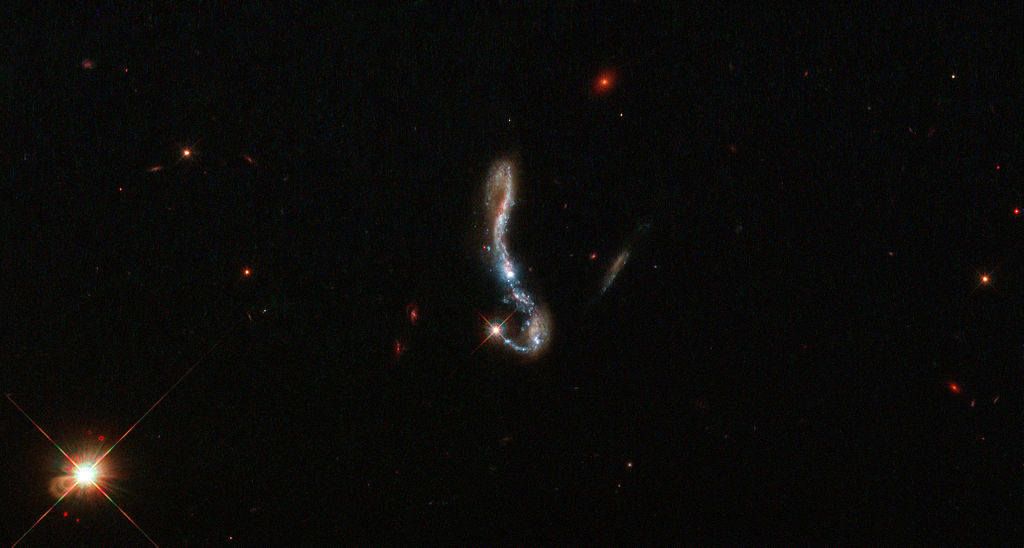A starburst galaxy is a galaxy undergoing an exceptionally high rate of star formation, as compared to the long-term average rate of star formation in the galaxy or the star formation rate observed in most other galaxies. In a starburst galaxy, the rate of star formation is so large that the galaxy will consume all of its gas reservoir, from which the stars are forming, on a timescale much shorter than the age of the galaxy.
As such, the starburst nature of a galaxy is a phase, and one that typically occupies a brief period of a galaxy's evolution. The majority of starburst galaxies are in the midst of a merger or close encounter with another galaxy. Starburst galaxies include M82, NGC 4038/NGC 4039 (the Antennae Galaxies), and IC 10.
 |
| Light and dust in a nearby starburst galaxy |
Starburst galaxies are defined by these three interrelated factors:
1- The rate at which the galaxy is currently converting gas into stars (the star-formation rate, or SFR).
2- The available quantity of gas from which stars can be formed.
3- A comparison of the timescale on which star formation will consume the available gas with the age or rotation period of the galaxy.
Commonly used definitions include:
· Continued star-formation where the current SFR would exhaust the available gas reservoir in much less than the age of the Universe (the Hubble Time).
· Continued star-formation where the current SFR would exhaust the available gas reservoir in much less than the dynamical timescale of the galaxy (perhaps one rotation period in a disk type galaxy).
· The current SFR, normalized by the past-averaged SFR, is much greater than unity. This ratio is referred to as the "birthrate parameter".







No comments